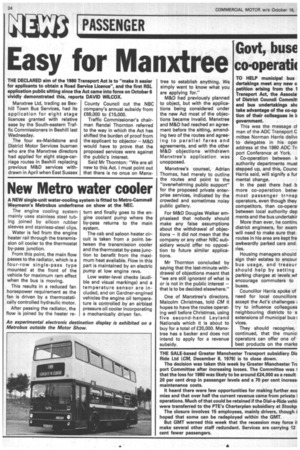New Metro water cooler
Page 26

If you've noticed an error in this article please click here to report it so we can fix it.
A NEW single-unit water-cooling system is fitted to Metro-Cammell Weymann's Metrobus underframe on show at the NEC.
The engine cooling system mainly uses stainless steel tubing joined by silicon rubber sleeves and stainless-steel clips.
Water is fed from the engine heater rail through the transmission oil cooler to the thermostat by-pass junction.
From this point, the main flow passes to the radiator, which is a four-row single-pass type mounted at the front of the vehicle for maximum ram effect when the bus is moving.
This results in a reduced fan horsepower requirement as the fan is driven by a thermostatically controlled hydraulic motor.
After passing the radiator, the flow is joined by the heater re turn and finally goes to the engine coolant pump where the by-pass returns to the main system.
The cab and saloon heater circuit is taken from a point between the transmission cooler and the thermostat by-pass junction to benefit from the maximum heat available. Flow in this part is maintained by an electric pump at low engine revs.
Low water-level checks (audible and visual markings) and a temperature sensor are included, and on Gardner-engined vehicles the engine oil temperature is controlled by an airblast pressure oil cooler incorporating a mechanically driven fan.




























































































































































































































































































